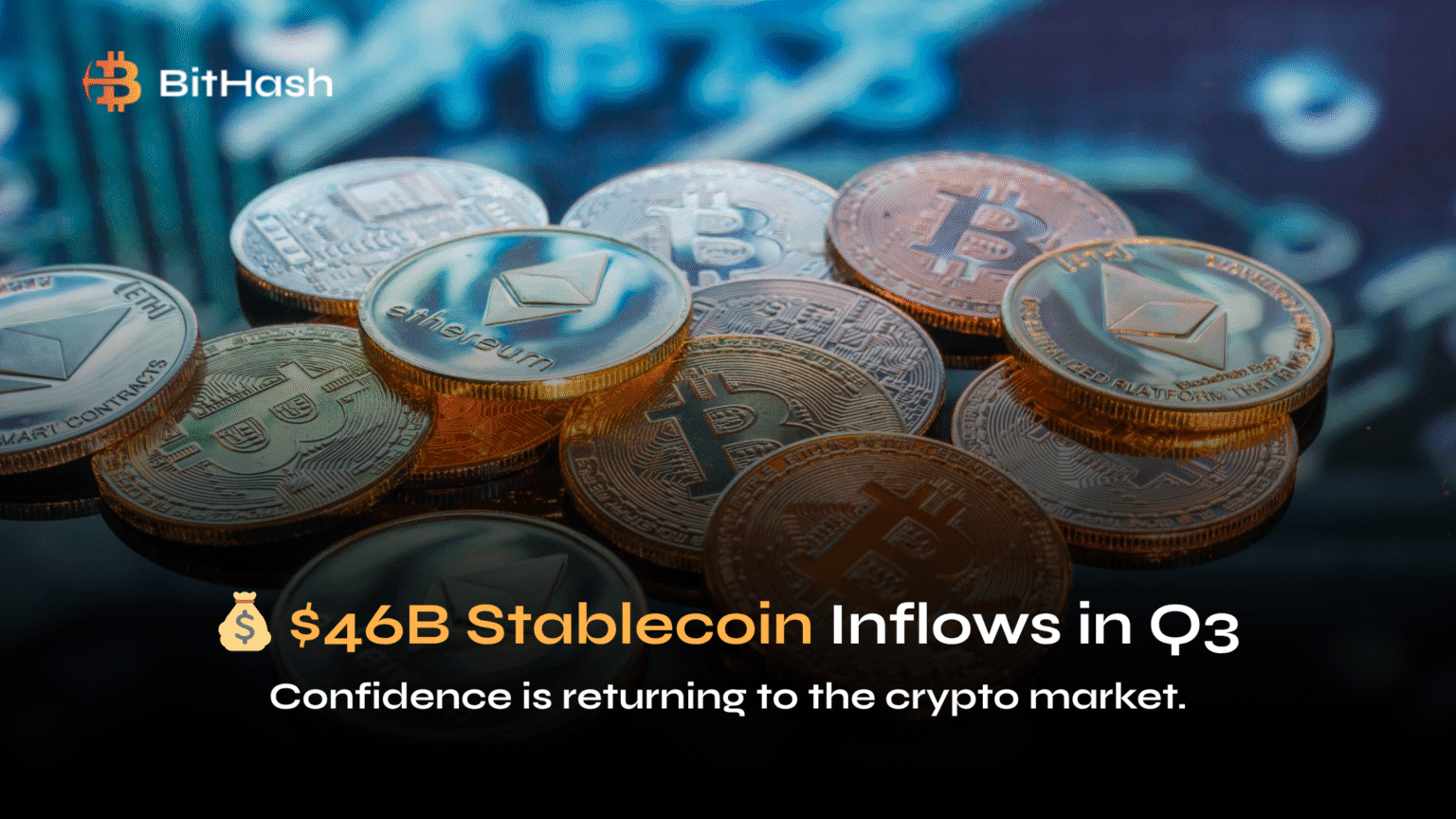According to DefiLlama data, the stablecoin market experienced a noteworthy jump during Q3, with billions being reallocated into digital assets. The net inflow for the quarter hit $45.6 billion, representing a remarkable 324% jump from Q2 inflows. The greatest gainers from this stablecoin net inflows Q3 increase were USDT, USDC, and the rapidly expanding Ethena USDe.
According to crypto analyst James Parker, “The inflow activity demonstrates that investors are ‘parking their money in stablecoins’ while waiting for the next big move. This demonstrates confidence, not fear.”
The leaders of the quarter tell a very consistent and clear story. Overall, USDT inflows in Q3 came in at $19.6 billion, and USDT remains in a leadership position in the market. USDC growth followed with $12.3 billion, and inflows into Ethena USDe amounted to an impressive $9 billion and demonstrated its rising popularity among traders. Other smaller plays, such as PayPal USD and MakerDAO USDS, also had strong quarters with inflows of $1.4 billion and $1.3 billion fractions of billion, respectively.
Over the past six months, the stablecoin market cap has grown by more than $56.5 billion, and most of that growth came from this recent quarter. These numbers highlight the growing importance of stablecoins in the global crypto economy.
On the network side, Ethereum remained the network with the most stablecoins in circulation at just over $171 billion. Tron held the second position with around $76 billion, followed by Solana, Arbitrum, and BNB Chain, which combined for about $29.7 billion. This means that while Ethereum is still the most dominant of the stablecoin networks, others have consistently been gaining ground, mostly due to speed and lower fees.
A new report from Crypto-Economy said that the total stablecoin market grew in Q3 to a total market cap of $290 billion, with USDT holding 59%, USDC capturing 25%, and USDe gaining almost 5% of the market. Experts suggest this shows growing competition and diversity within the stablecoin sector.
Despite the influx of capital, user engagement has decreased slightly. The number of active addresses has dwindled to 26 million, a decrease of 22.6%, and the total transaction volume has fallen 11% to $3.17 trillion. Analysts believe this reduction reflects not weakness but an accumulation phase where money is on the sidelines waiting for clearer market indications.
Crypto strategist Laura Chen explained, “When inflows rise but transactions slow down, it often means investors are getting ready for something bigger. The calm before the storm is usually bullish for the crypto market.”
This shift in activity shows that stablecoins are no longer just a trading tool; they are becoming the digital dollars of the crypto world. They serve as a bridge between traditional finance and blockchain networks, offering security, transparency, and liquidity.
The increase in USDT and USDC inflows in 2025 also indicates an increasing institutional interest. Financial institutions and DeFi players continue to leverage these assets for payments, lending, and settlements. At the same time, the increase in Ethena USDe inflows shows that new participants can still disrupt a market that has long been dominated by the big two.
Experts say that the stablecoin market cap across chains will keep expanding as blockchain adoption spreads globally. As stablecoins become more common in payments and decentralized finance, they will remain one of the most trusted gateways into crypto.
As Parker summarized, “Stablecoins are the heartbeat of crypto liquidity. The current rise shows faith in the system; investors are holding digital cash, waiting for the next wave.”
Conclusion:
The increase in net inflows for stablecoins during Q3 is a significant milestone in the evolution of crypto. USDT, USDC, and Ethena USDe drove the considerable net inflows as the market matured into a key pillar of global finance. Although transaction volume has slowed, investor confidence suggests a sustainable, stablecoin market in the long term.



